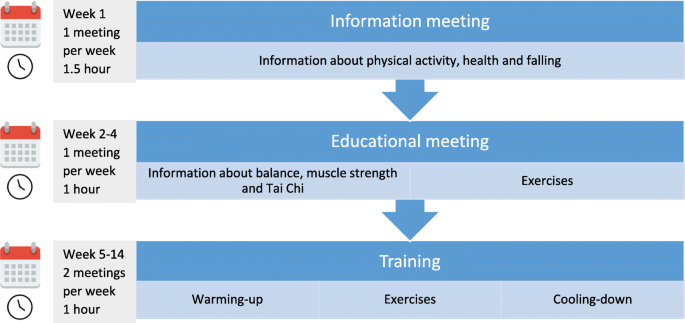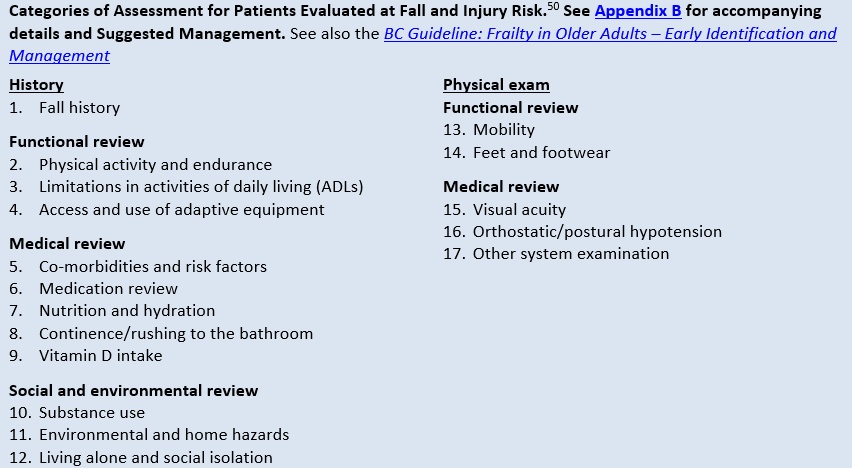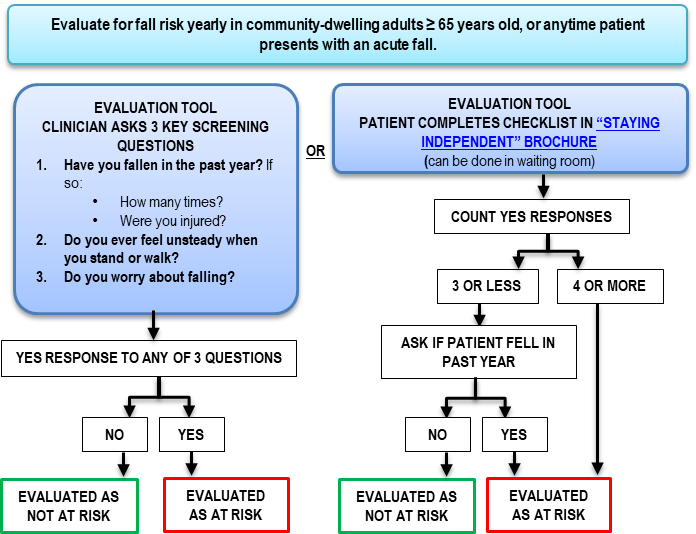Some Known Incorrect Statements About Dementia Fall Risk
Some Known Incorrect Statements About Dementia Fall Risk
Blog Article
5 Easy Facts About Dementia Fall Risk Explained
Table of Contents8 Easy Facts About Dementia Fall Risk DescribedDementia Fall Risk Can Be Fun For AnyoneAn Unbiased View of Dementia Fall RiskRumored Buzz on Dementia Fall RiskDementia Fall Risk Can Be Fun For Everyone
In the neighborhood, insufficient street lighting or vulnerable creeks and landfills might also trigger mishaps. Loss Risk Assessment Device (FRAT) is a 4-item falls-risk testing tool for sub-acute and property treatment. The FRAT has three areas: fall danger condition, danger variable checklist, and activity strategy. A Fall Threat Status consists of data concerning background of recent falls, medicines, mental and cognitive status of the individual.If the patient scores on a threat factor, the equivalent number of factors are counted to the client's autumn threat score in the box to the far. If a patient's autumn danger rating completes five or greater, the individual is at high threat for drops. If the patient ratings just four points or lower, they are still at some threat of dropping, and the nurse should utilize their best scientific evaluation to manage all autumn danger variables as component of a holistic care strategy.
These common strategies, in basic, aid establish a risk-free environment that reduces accidental drops and marks core preventative procedures for all patients. Indicators are vital for individuals at danger for falls.
Some Known Details About Dementia Fall Risk
Wristbands must consist of the patient's last and very first name, date of birth, and NHS number in the UK. Only red shade needs to be made use of to indicate unique patient standing.
Things that are also far may need the individual to connect or ambulate unnecessarily and can potentially be a threat or add to drops. Aids protect against the person from heading out of bed without any support. Nurses react to fallers' telephone call lights quicker than they do to lights initiated by non-fallers.
Visual impairment can greatly trigger drops. Keeping the beds closer to the floor minimizes the risk of falls and major injury. Positioning the mattress on the flooring significantly lowers loss danger in some medical care settings.
What Does Dementia Fall Risk Do?
Individuals that are tall and with weak leg muscular tissues who try to rest on the bed from a standing setting are most likely to fall onto the bed because it's also low for them to lower themselves safely. If a tall patient efforts to obtain up from a low bed without assistance, the individual is likely to drop back down onto the bed or miss the bed and drop onto the floor.
They're designed to advertise timely rescue, not to stop falls from bed. Distinct alarms can additionally remind the person not to get up alone. Making use of alarm systems can additionally be a replacement for physical restrictions. Apart from bed alarm systems, increased supervision for high-risk patients also may assist protect against drops.

Clients with a shuffling stride boost loss possibilities substantially. To minimize fall threat, footwear must be with a little to no heel, slim soles with slip-resistant tread, and support the ankle joints. Suggest person to use nonskid socks to avoid the feet from gliding upon standing. However, encourage people to put on appropriate, well-fitting go now shoesnot nonskid socks for ambulation.
Unknown Facts About Dementia Fall Risk
Individuals, particularly older adults, have actually reduced visual ability. Lights more information a strange setting aids enhance presence if the client should get up in the evening. In a research study, homes with adequate lighting record fewer drops (Ramulu et al., 2021). Enhancement in lights at home might reduce autumn prices in older adults (Dementia Fall Risk). Making use of stride belts by all healthcare suppliers can promote safety and security when assisting people with transfers from bed to chair.

Caretakers work for assuring a safe and secure, secured, and secure atmosphere. Nonetheless, studies showed really low-certainty proof that sitters decrease loss threat in acute treatment health centers and just moderate-certainty that options like video clip monitoring can minimize sitter usage without increasing loss danger, recommending that caretakers are not as useful as originally believed (Greely et al., 2020).
The Of Dementia Fall Risk

Increased physical conditioning minimizes the risk for falls and limits injury that is endured when fall transpires. Land and water-based workout programs may be similarly useful on equilibrium and stride and therefore lower the risk for falls. Water exercise may add a positive benefit on equilibrium and stride for women 65 years and older.
Chair Increase Workout is a basic sit-to-stand workout that aids strengthen the muscle mass in the thighs and buttocks and enhances mobility and self-reliance. The goal is to do Chair Increase workouts without utilizing hands as the customer ends up being stronger. See resources area for an in-depth guideline on how to perform Chair Increase exercise.
Report this page